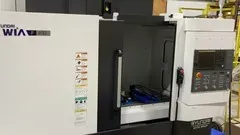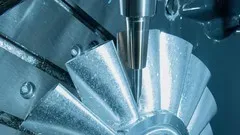
Basic G-code Programming for CNC Mills

This course teaches you the fundamentals of G-code programming for 3-axis CNC mills. Learn how to write G-code for milling operations such as rough and finish profile milling, face milling, line right and line left cutter compensation, and more. Discover how to calculate feeds and speeds for milling, drilling and tapping, and how to create and call sub-routines. With exercises at the end of each section, you'll be able to practice your new skills and become a G-code programming expert.▼
Course Feature
![]() Cost:
Cost:
Paid
![]() Provider:
Provider:
Udemy
![]() Certificate:
Certificate:
Paid Certification
![]() Language:
Language:
English
![]() Start Date:
Start Date:
2019-10-17
Course Overview
❗The content presented here is sourced directly from Udemy platform. For comprehensive course details, including enrollment information, simply click on the 'Go to class' link on our website.
Updated in [August 13th, 2023]
Skills and Knowledge Acquired:
This course will provide students with the skills and knowledge to write basic G-code programs for 3-axis CNC mills. Students will learn how to write G-code for milling operations such as rough and finish profile milling, face milling, line right and line left cutter compensation, and how to determine the I and J values for clockwise and counterclockwise arcs. Additionally, students will learn how to use canned cycles for drilling operations, program format, calculate feeds and speeds for milling, drilling and tapping, create and call sub-routines, and manage sub-programs using the M98 command.
Contribution to Professional Growth:
This course provides a comprehensive introduction to basic G-code programming for CNC mills, which is essential for professional growth in the field of CNC machining. It covers topics such as rough and finish profile milling, face milling, line right and line left cutter compensation, calculating feeds and speeds for milling, drilling and tapping, and creating and calling sub-routines. By mastering these skills, professionals can increase their knowledge and proficiency in CNC machining, which can lead to greater career opportunities.
Suitability for Further Education:
This course is suitable for preparing further education in the field of CNC mills. It covers topics such as G-code programming, milling operations, cutter compensation, canned cycles for drilling operations, calculating feeds and speeds, and creating and calling sub-routines. These topics are essential for further education in the field of CNC mills.
Course Provider





